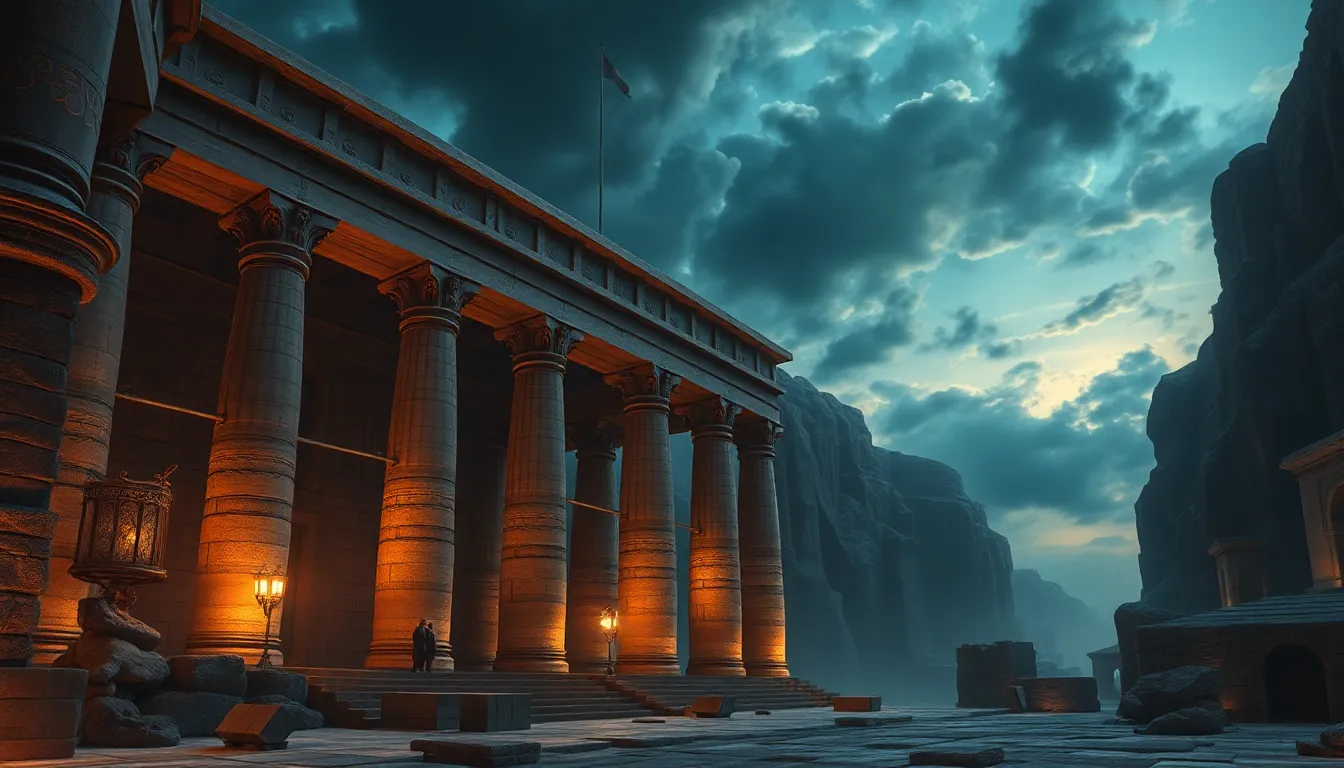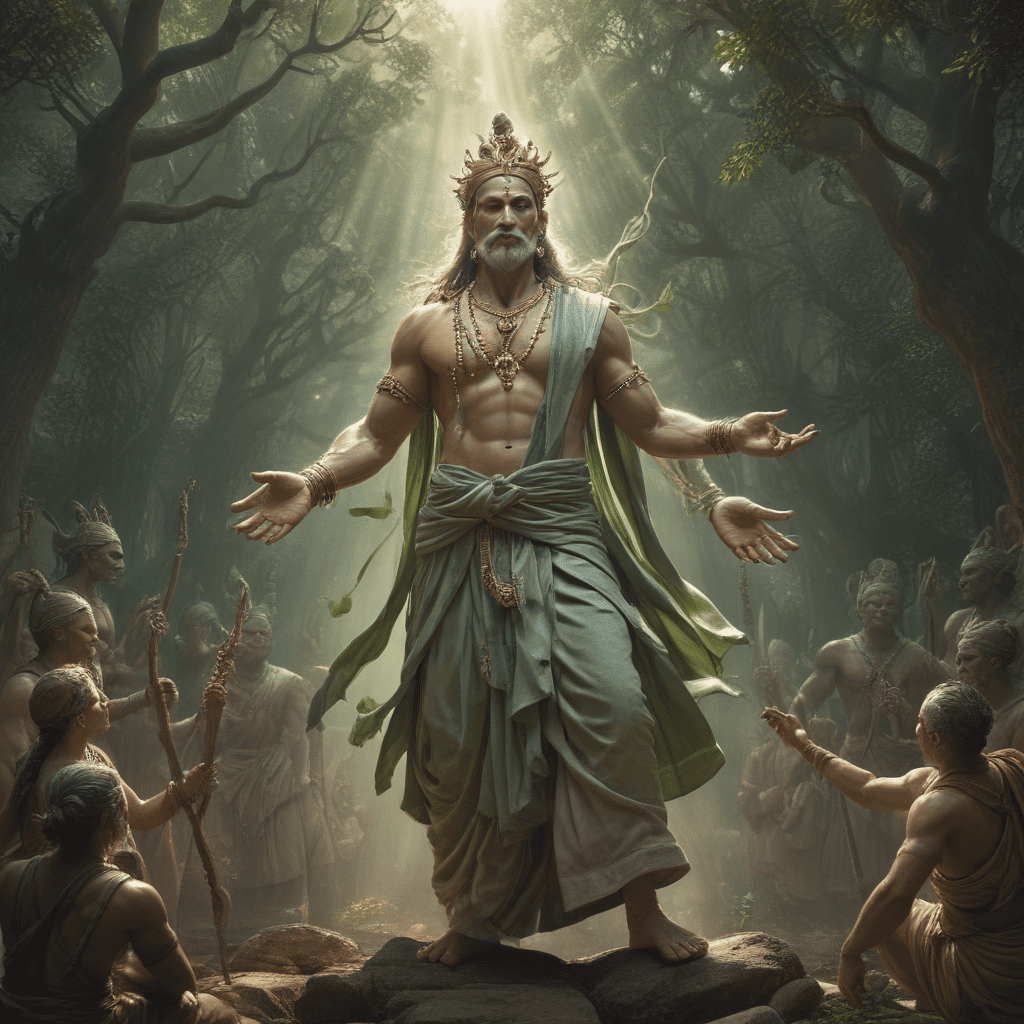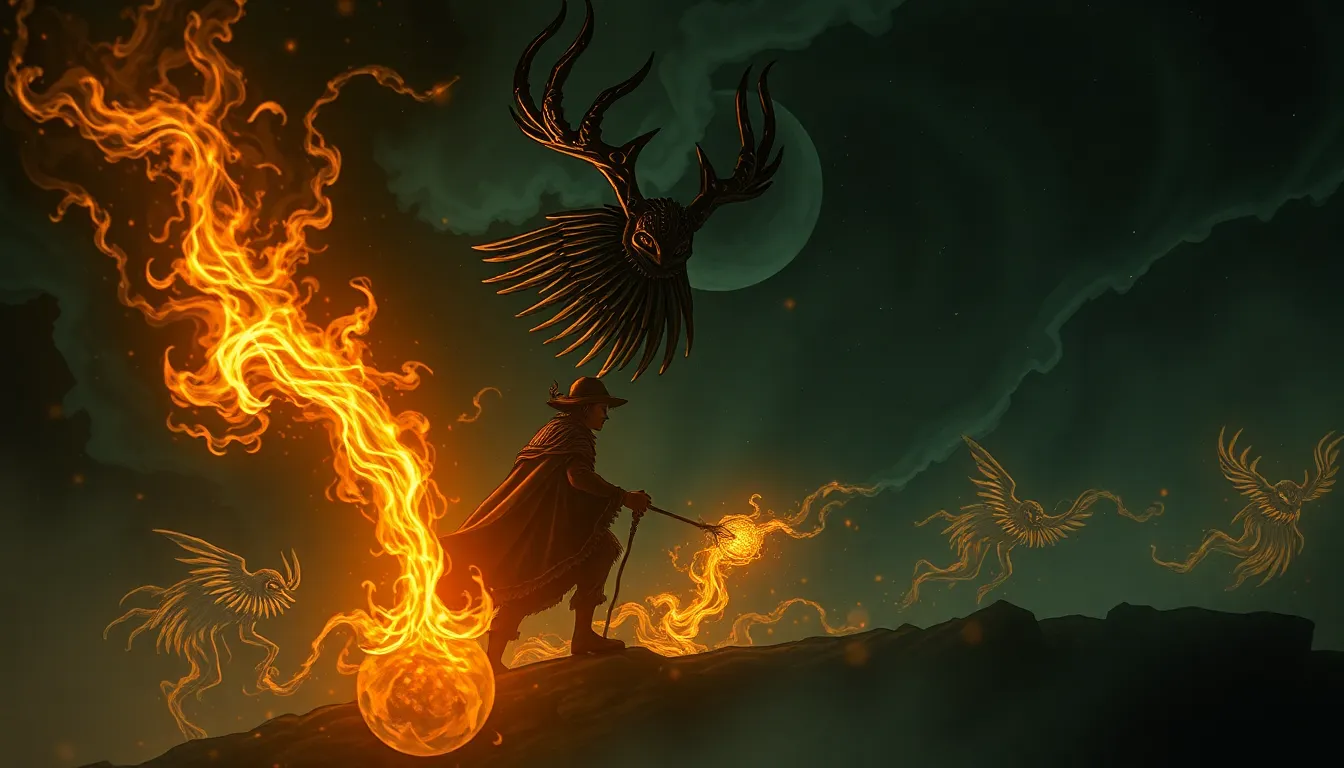The Mythical Architects: How Gods Shaped Our World
I. Introduction
The concept of mythical architects refers to the divine beings believed to have shaped the world through their creative powers. Throughout history, cultures across the globe have personified gods as the ultimate architects of existence, embedding these figures within their creation myths and cultural narratives. This article aims to explore the significance of these divine architects and their influence on human understanding of the universe, architecture, culture, and society.
From the ancient Egyptian pantheon to the deities of Hinduism and Greek mythology, the stories of gods and their creations reflect humanity’s quest to understand its place in the cosmos. By examining these narratives, we can uncover the profound impact of mythological architects on the world we inhabit today.
II. The Role of Gods in Creation Myths
Creation myths serve as foundational stories that explain how the universe and life within it came to be. Across various cultures, common themes emerge, such as chaos transforming into order, divine intervention, and the struggle between forces of creation and destruction.
- Brahma: In Hindu mythology, Brahma is the creator god who emerged from the cosmic ocean, symbolizing the birth of the universe.
- Gaia: In Greek mythology, Gaia represents the Earth itself and is often depicted as the mother of all life, emphasizing the interconnectedness of all beings.
- Ptau: An ancient Egyptian god associated with craftsmanship and creation, Ptah is believed to have spoken the world into existence.
These deities symbolize the human desire to comprehend the cosmos, making creation myths vital to cultural identity and understanding.
III. Architectural Wonders and Divine Influence
Many ancient structures are attributed to divine inspiration, reflecting the belief that gods played a crucial role in their design and construction. The relationship between architecture and spirituality is evident in the sacred spaces created to honor these deities.
- The Pyramids of Giza: Believed to be designed for the afterlife, these monumental structures are dedicated to the pharaohs, who were considered divine.
- Greek Temples: Structures like the Parthenon were built to honor gods such as Athena, embodying both architectural brilliance and religious devotion.
Case studies of notable buildings linked to gods demonstrate the fusion of architecture and mythology, serving as a testament to human creativity inspired by the divine.
IV. The Influence of Deities on Nature and the Environment
In various mythologies, gods are often personifications of natural elements, such as rivers, mountains, and storms. These deities shape landscapes and ecosystems within their narratives, influencing how societies perceive and interact with their environment.
- Poseidon: The Greek god of the sea, whose temperament could cause storms and earthquakes, reflecting humanity’s reverence and fear of the ocean.
- Gaea: Not only the earth goddess but also seen as the nurturing force behind agriculture and fertility.
These myths often carry environmental implications, illustrating how ancient peoples understood their surroundings and the forces that governed them.
V. Cultural Narratives and Their Impact on Society
The role of gods in shaping moral and ethical frameworks is evident in many cultures. Myths serve as a means of social cohesion and identity, providing guidelines for behavior and community values.
- Social Cohesion: Shared myths foster a sense of belonging and cultural identity among community members.
- Ethical Frameworks: Deities often exemplify virtues, offering moral lessons through their stories.
In contemporary culture, the echoes of ancient narratives continue to influence societal norms and values, demonstrating the timeless relevance of these myths.
VI. Artistic Representations of Divine Architects
The impact of mythology on the arts is profound, with countless works inspired by divine architects and their creations. Art serves as a medium to express the wonder and mystery surrounding these figures.
- Literature: Epic poems like the “Iliad” and “Odyssey” feature gods interacting with humans, shaping destinies and events.
- Visual Arts: Paintings and sculptures often depict gods and their architectural marvels, capturing the beauty and intricacy of divine design.
Iconic artworks, such as Michelangelo’s “Creation of Adam,” illustrate the enduring fascination with divine architecture and the relationship between gods and humanity.
VII. The Intersection of Science and Mythology
Ancient myths often foreshadowed scientific discoveries, revealing a dialogue between mythology and the modern understanding of the world. Many myths contain elements that align with scientific phenomena, reflecting humanity’s quest for knowledge.
- The Big Bang: Some creation myths resemble the concept of a universe emerging from chaos, paralleling modern scientific theories.
- Natural Disasters: Myths explaining earthquakes or floods often align with geological events, showcasing ancient peoples’ attempts to make sense of their world.
This ongoing dialogue emphasizes the relevance of mythology in understanding natural phenomena.
VIII. Reinterpreting Myths in the Modern World
In contemporary society, there is a revival of interest in mythology as a source of inspiration for architecture and culture. Modern architects often draw from ancient myths to create spaces that resonate with historical significance.
- Modern Architecture: Structures like the Guggenheim Museum incorporate mythological themes, blending the old with the new.
- Popular Culture: Films and novels frequently adapt divine narratives, reshaping them for modern audiences while retaining their core themes.
This adaptation showcases the enduring legacy of these narratives in shaping today’s cultural landscape.
IX. The Legacy of Mythical Architects
The myths surrounding divine architects have left a lasting impact on architecture and urban planning. These stories continue to inspire innovation and creativity, influencing how we design and interact with our built environments.
- Urban Planning: Many cities are designed with a sense of sacred geometry, echoing principles found in ancient civilizations.
- Innovation: The creative stories of gods spark the imagination, encouraging contemporary architects to push boundaries.
Education plays a crucial role in preserving these narratives, ensuring that future generations appreciate the rich tapestry of mythology.
X. Conclusion
In conclusion, the gods as architects of our world represent a profound aspect of human culture and understanding. From creation myths to architectural wonders, the influence of these divine figures is deeply woven into the fabric of society. As we continue to explore and reinterpret these ancient narratives, we uncover the timeless lessons and inspirations they offer, enriching our contemporary lives and shaping our future.




